My 20 year old self would be very surprised to hear this: Birding is a wonderful pastime that I somehow never get tired of, and I see something new each day. I wrote a little ode to bird-watching just the other week as an introduction to this post. So if you want to know more why you should even start birding, then read on here: Why watch birds – why you should start birding In short: birding can be an excellent first connection to nature because birds are accessible, fun and interesting and you can observe them everywhere.
My tips for how to get started with bird-watching
In this post, I’ll focus more on what you need when you’ve decided you want to explore birding. You don’t need that much, actually. A good reference guide and a pair of binoculars will serve you well for many years. If you want to watch the birds in your garden, you might want to set up a feeder – this will attract birds to your garden, and you will also help them to survive.
As for binoculars, I prefer light ones, because I’m more likely to grab them if I go for a walk (this applies to all of the equipment I have, sketching tools, camera, hiking gear – it all has to be light and small). I recommend binoculars with a magnification of 8x or 10x and with a lens diameter around 30mm. These specs are usually referred to in the description of the binoculars – in this case it would be 8×30 or 10×30.
More magnification means more zoom – you can see more details that are farther away, but it also narrows your field of view and can make the image jittery if you don’t have steady hands. And lenses with a bigger diameter means a brighter image, especially when it’s darker, but it also means more weight – this is why I travel with very light and small 10×26 binoculars (so 10x magnification and 26mm lens diameter) that only weigh around 300 grams. When it comes to binoculars, I’m definitely not a tech nerd, I simply use what I’ve got and what serves me well. Most big brands make really good bins.
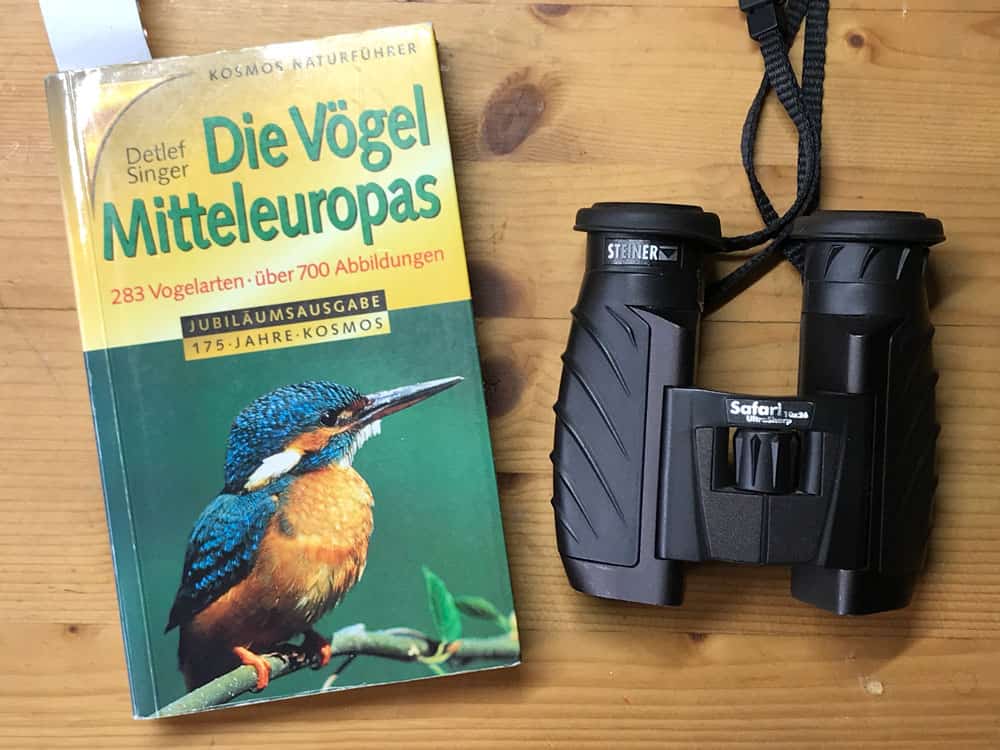
I find it far more important to have a good reference guide. We live in the age of ID apps and websites, and the ones i’ve tried are surprisingly good, but for me nothing beats a well-written, well-illustrated (or well-photographed) bird reference book. These books are the result of years of expertise and knowledge, and on a few hundred pages you will have most species that you can encounter on your continent. Read around in the book, make yourself familiar with the species and different types of birds, and over time (and when you can tell more birds apart) it will become easier to reference the right one.
Each country has their own great bird reference books and wildlife guides, for Germany, I can recommend most books by Kosmos (“Die Vögel Mitteleuropas” is what I use most, but I also refer to “Pareys Vogelbuch” (Parey Verlag) quite often with its great illustrations – both of these books are a bit older). For the UK I imagine the RSBP has quite a lot of good books, and for North American bird guides I have heard a lot of good things about David Allan Sibley’s books – he also is a fabulous bird illustrator. If any of you have more recommendations, please share them! As for choosing books with illustrations or photographs, I like to have both, these days the books have really good photographs for ID purposes, but it can make sense to have a book with illustrations, particularly if it covers male and female birds, or juveniles that often look different from the adult birds. Illustrations are often showing a generalized, typical appearance of a bird with all the important features showing, so you get an impression what a “standard” bird of a species would look like. You can’t edit this well into photos.
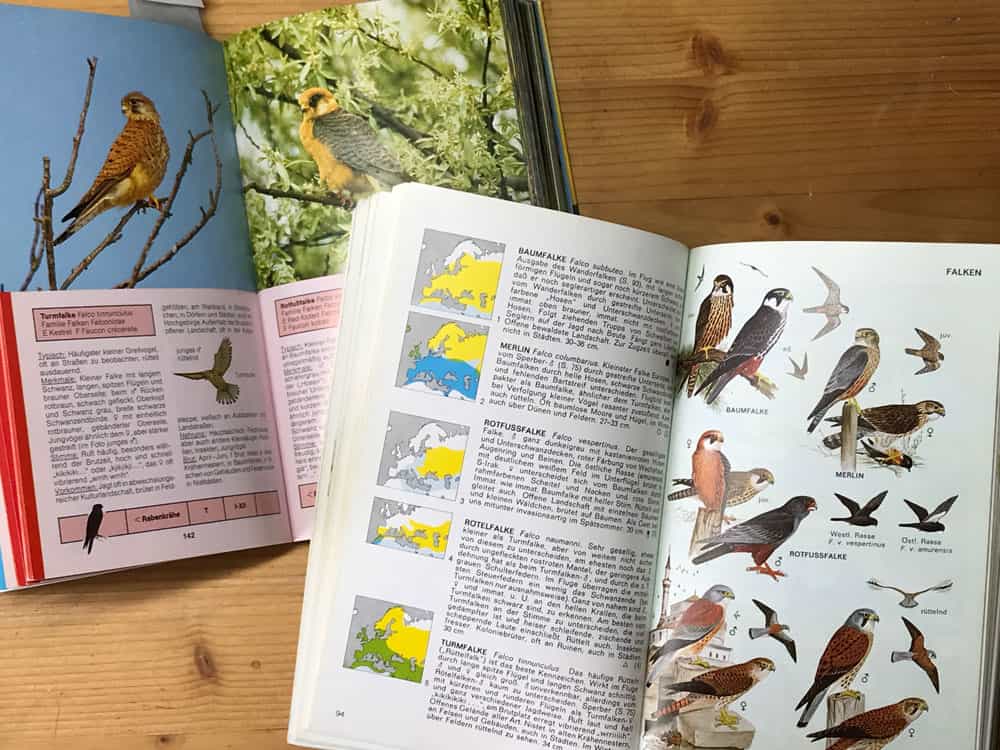
I usually don’t take my id books with me (because of weight), so I have to find ways to memorize the features and movements of the bird I saw. Whenever I can, I do a little sketch (more about that later), or I mention the features I see out loud – to myself or whoever is around. This helps me to keep track of the most important features. If I have a camera with me, I often try to take a picture, but your own observation is more often a better way to remember how the bird moves and behaves.
As I said, bird ID apps have become better in recent years, but you need a good photo to start with. So usually the flower and insect apps work best – they let you get really close. But a lot of apps even have bird calls or small video clips. I still rely mostly on books. The big nature conservation organizations (like Audubon in the US, RSPB in the UK, NABU and BUND in Germany) usually have excellent info and pictures on the most common birds on their websites and they also sell reference books in all shapes and sizes.
Now that we have the technicalities out of the way, where do you start? It’s easy. You just go out (or sit down next to your window), pay attention, slow down, and wait for some birds to turn up. And they will. As I said, birds are everywhere. You’re of course more likely to find a lot of birds from a certain group in special habitats, for example you will find waders and sea birds near the sea, and birds of prey often near open fields, garden birds in gardens and parks. See what kind of birds and habitats interest you, and then return there regularly. You will learn a lot just from observing your own “patch”, and there will very likely also be new species when you least expect them. It’s definitely ok to start at your local park, and maybe you’ll be surprised at all the different bird species that can be found there.
If you want to take your birding one step further, try sketching the birds you see. Regular readers of my blog know that this is one of my favorite things to do, and this is because it can deepen the understanding of nature even further. Sketching is a way of seeing and making sense of the world, and it also serves as a record for me – like a visual list. When I sketch birds, I take notes of their behaviour, too, and I find I memorize the species I sketch more easily than if I just see them and look them up in a book. Often I will do a more detailed study of a bird at home with watercolor, which helps me to learn more about the patterns and plumage of that species. Drawing something will really make it stick in your memory.
What I like about this way of bird-watching is that it brings be a direct connection to nature, by slowing down and observing I’m taken out of whatever negative or stressful thought I might have had. It really works like a kind of eco-therapy for me. I have to pay attention and be quick in my decision of what strokes to place and how, which means I have to focus. I’m completely immersed in the situation, and I love the combination of drawing and writing, and looking back through my notes always brings back vivid memories of the bird encounter. Plus, other people really love it when you draw a bird for them.
If you want to learn more about sketching birds, I will share more about that in the next post. Sketching birds is one of the most enjoyable activities for me in combination with birding.
Finally, here is some advice what not to do when birding: never, and I mean never disturb the birds, especially nesting birds or birds with young, or birds that look weak. Keep your distance from the birds, even if they let you come near, don’t disturb their nesting sites or feeding grounds. Don’t make loud noises and don’t let your dog from the leash, especially not in nature reserves. Don’t litter when you’re out in nature. This should be common sense and I’m sure all of you who are reading this blog don’t do it anyway, but sadly for some people it is not.
One last thing: please don’t be one of those bird photographers that disturb and tire the birds so much that they can’t hunt or feed anymore – I’ve heard some disturbing stories about people who cared more about their photos than about the health of the bird. If you ever find a definitely hurt or sick bird that can’t fly away from you, then call a wildlife or nature center and ask around where you can bring the bird – there are specialists in some wildlife centers can nurse birds back to health and then release them back into the wild.
I hope I have given you an overview on how to start birding – if I have missed anything or if you have further questions, let me know in the comments. Birds are truly wonderful creatures to watch and get familiar with, and I hope you will enjoy it as much as I do. Birding, (or if you’ve been birding for a while, bird-sketching) is a wonderful pastime, and one that you can practice anywhere. I’ll share more about how to get started with bird-sketching in my next post for more bird-craziness!
Thank you for reading this blog! It'll always stay free. To keep it going, you can support my work directly through a donation or through my nature sketching classes.
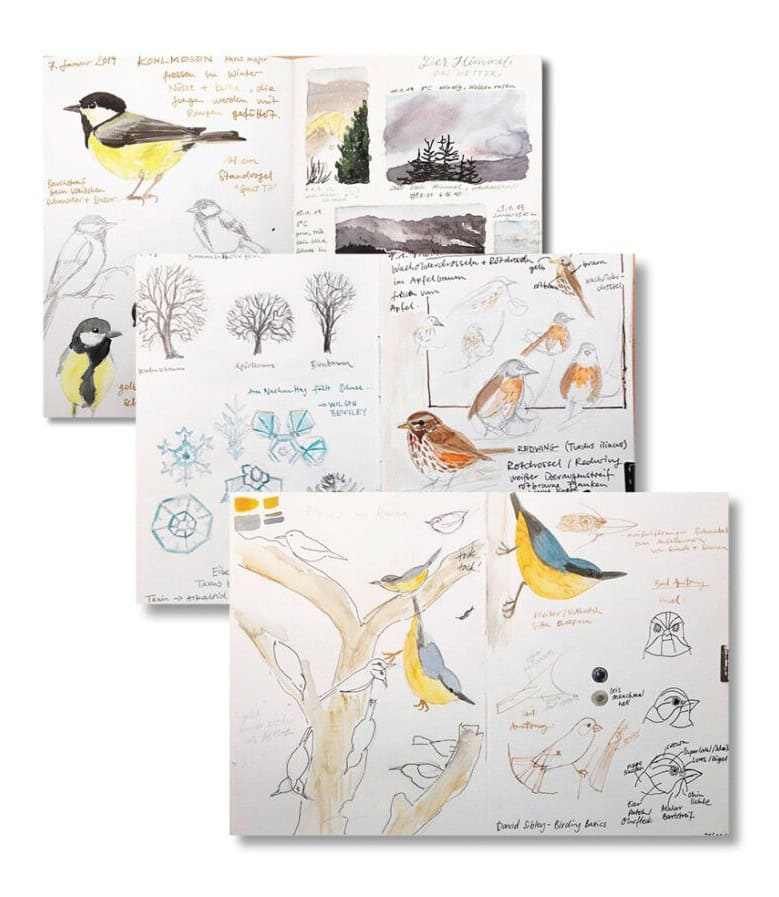
Join my free newsletter and never miss a blog post! You'll get new blog post notifications directly to your inbox. Receive 5 great sketching resources as a welcome gift for joining my newsletter! Here's what's inside:
- How to draw anything (PDF guide)
- Getting started with watercolor (free ebook)
- My favorite tips for creating great sketchbook pages
- My 5-step guide for drawing birds (PDF guide)
- My current watercolor palette layout (PDF guide)
By subscribing, you agree that I may process your information in accordance with my privacy policy

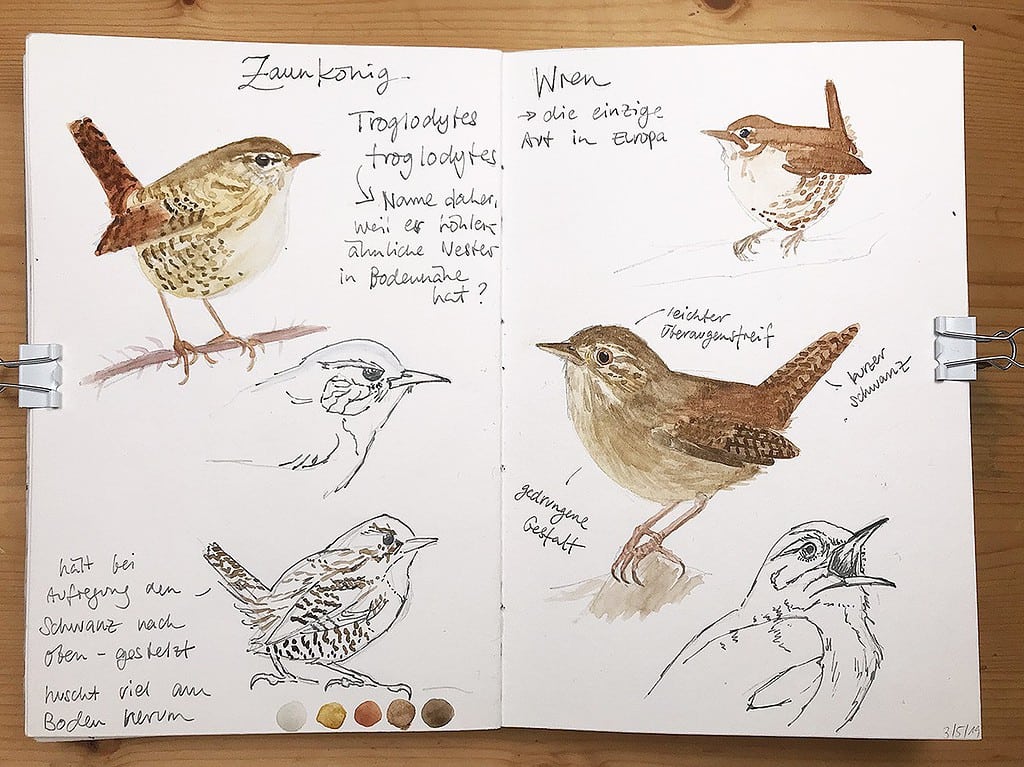

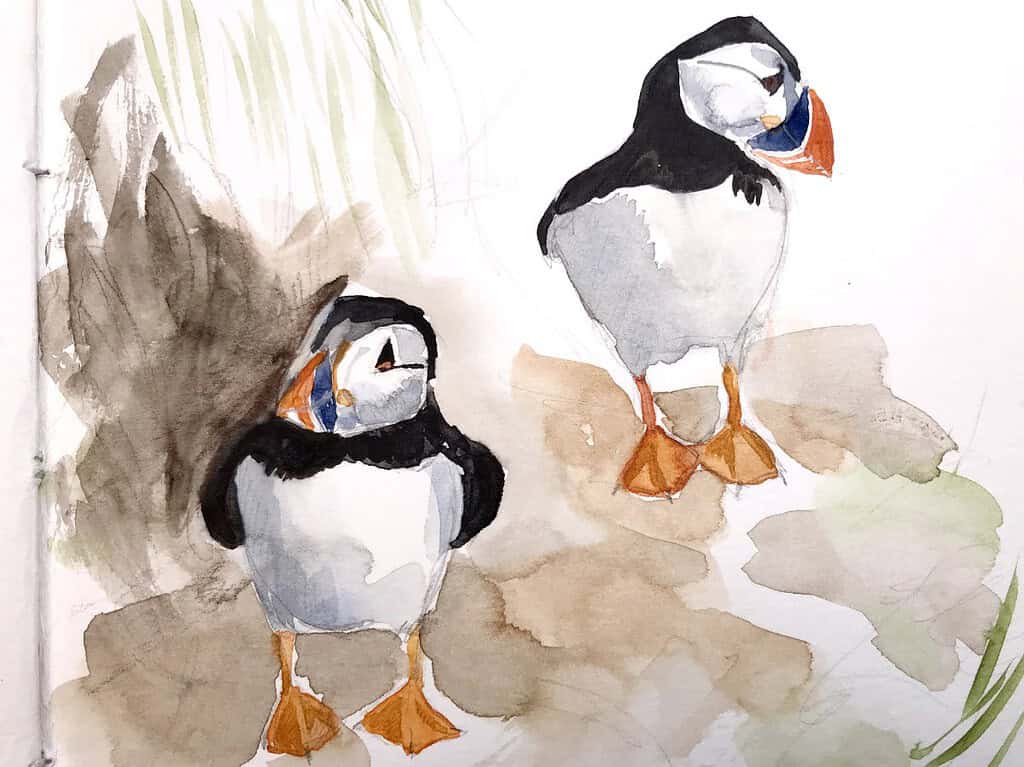
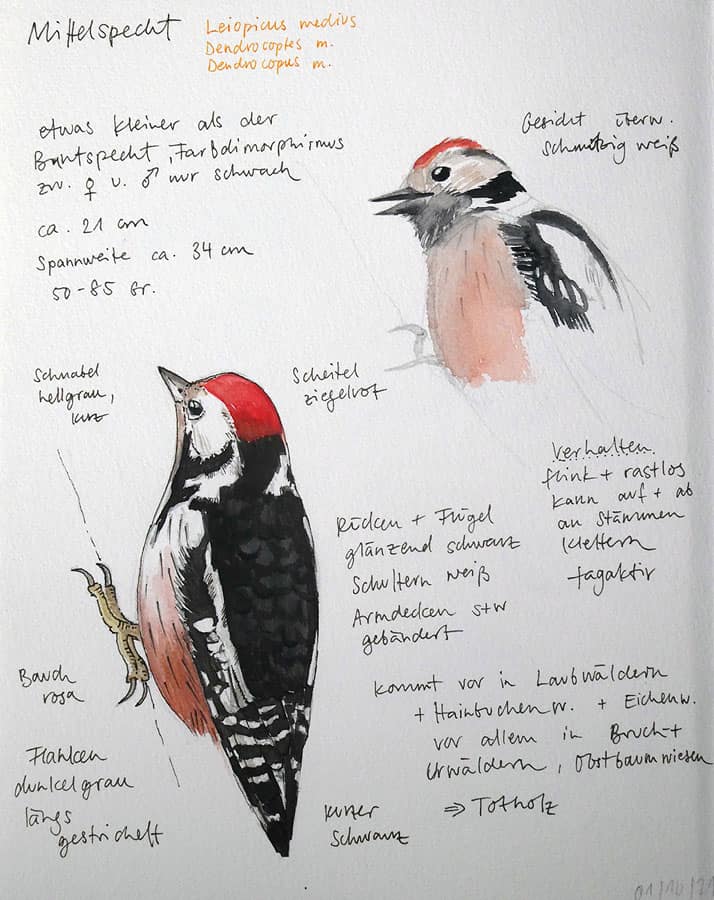
Great advice, Julia, from one birdwatcher to another!
Thank you Eileen!
Great advice on respecting the birds and not disturbing them! I had a wonderful observation of a pair of Red-tailed Hawks hunting together in a fenced school field this weekend, 2 mornings in a row (WA state)! I watched them from the fence while one sat on the soccer goal scouting while the other was on the ground hunting. Then, after a few minutes they would switch positions…it was the neatest thing to see! And, I could see their red tail feathers as they flew! I was with my dog and was tempted to find a way through the fence to get a closer look (they were so big, I could see from a distance), but the gate was locked and I’m thankful I didn’t disturb their morning hunt and spook them with the dog!
That sounds like a wonderful encounter with those birds, Karen!
Hi Julia,
Two weeks ago I made a feeder in my front garden and it has already attracted some small birds. It is so enjoyable to look at these little birds. I really like your sketches of nature and it is very inspiring. (I’m an oilpainter (mostly cats) and I think I will try to paint some birds)
Have a nice day,
Conny
Hi Conny, how lovely that your feeder is in good use already! And do try out painting birds, I’m sure you’ll enjoy it. 🙂